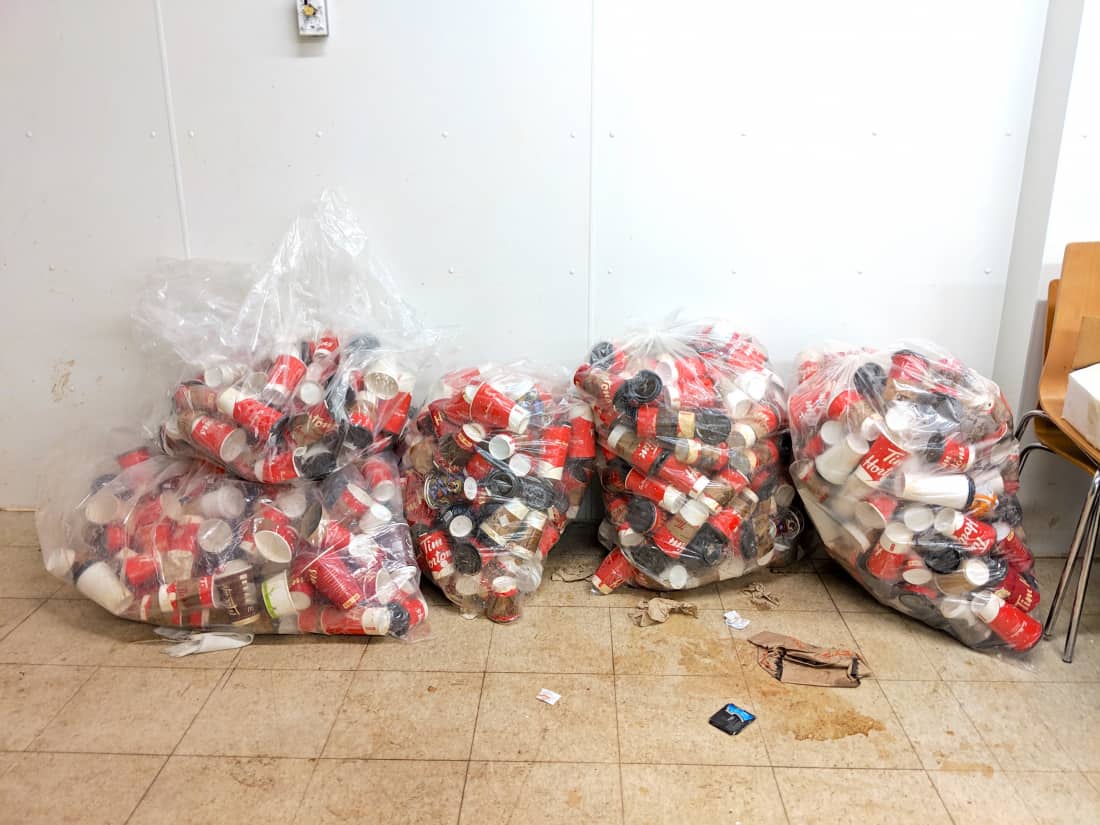
Members of the Office of Sustainability and volunteers took to key buildings on the University of Saskatchewan campus in late January for their pick of the litter, literally. For one organizer of the waste audit, the findings were a load of rubbish.
From Jan. 25 to 29, a team of nearly 20 people were tasked with analyzing the waste bins of six buildings on campus to determine their garbage trends. The audit looked into the garbage produced in Place Riel, Murray Library, Louis’ Pub, the Geology Building, the Education Building and the Agriculture Building, separating the garbage into three streams: landfill, organics and recycling.
The team concluded that about 60 per cent of the waste produced by these buildings was organic material that did not need to be placed in bins intended for the landfill. Of the remaining 40 per cent of waste collected, 13 per cent was recyclable material that should have been recycled and around 28 per cent was actual landfill material.
Out of all the buildings examined, the waste audit found that Place Riel produces the most waste. Matt Wolsfeld, community engagement co-ordinator for the Office of Sustainability and coorganizer of the waste audit, chalks this up to the Place Riel food court, a trend that is also seen in Marquis Hall.
“Foot traffic plays into it, but the key aspect of it is the food court. That is one of the two main food centres on campus,” Wolsfeld said. “Actually, when we compare it to Marquis Hall, in one day, [Marquis Hall] had just about the same amount of waste as Place Riel did all week. That’s why we had to keep that for another audit entirely.”
Place Riel, which is owned and operated by the U of S Students’ Union, also stood out from the other buildings in the audit due to its proliferation of Styrofoam in waste bins. While waste like disposable coffee cups, which were another standout in the audit, can be recycled, Styrofoam is of particular note as it does not biodegrade.
Wolsfeld revealed that the Place Riel food court is the only place on campus that Styrofoam is distributed. For Wolsfeld, this is a choice made by the USSU for vendor contracts.
“The only place you’re getting Styrofoam [from] is Lower Place Riel, and that’s because the USSU has a contract with vendors in [the food court] that allows them to use what they want as those kinds of materials,” Wolsfeld said. “So you can’t just go in and break those contracts, … [but] in the future, maybe those contracts have some kind of stipulation that states what kind of materials we can and can’t use.”
Wolsfeld hopes that the findings from the waste audit can serve as a necessary first step towards implementing an organics collection program.
“The reason that we undertook it is to look at the organics composition of our waste because we want to move forward on an organics program,” Wolsfeld said. “That said, there are a lot of complicated aspects that go into an institutional organics program, so we can’t say that one waste audit is the trick to creating that program.”
For Wolsfeld, much of the waste produced on campus could be mitigated by students and staff evaluating their waste decisions.
“People are taking less than five seconds to decide where their garbage goes. Whatever they have in their hands, they take less than five seconds to figure out. If they don’t know, they don’t ask, and they’ll never find that out,” Wolsfeld said. “If you don’t know, you actually have to flag that and look it up… You have to be interested enough to make that change and figure out where it goes.”
—
Wardah Anwar
Photo: U of S Office of Sustainability / Supplied